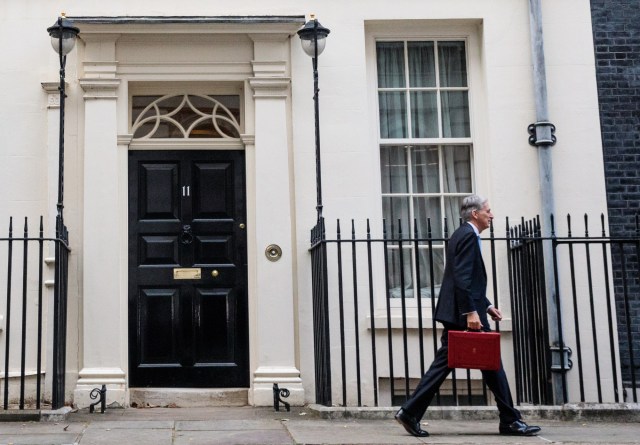Credit: Jack Taylor/Getty Images

What is Modern Monetary Theory (MMT)? And why should we care?
To answer the second question first, MMT matters because it’s starting to trickle down from academia into serious politics. The theory is finding supporters on the ascendant Left-wing of the US Democratic Party. Indeed, some see it as the means by which a progressive administration might fund the Green New Deal (which carries a ten trillion dollar price tag).
As for the first question, it might be helpful to draw a parallel between economics and physics. The theories of the two disciplines can be expressed in the form of complicated equations. Physics theory has a much firmer foundation in reality than economic theory, but in both cases one can rearrange the maths and re-chop the logic to arrive at bold new interpretations. MMT is to economics what general relativity, quantum mechanics and string theory are to physics – a fundamental reordering of the theoretical framework.
In conventional economic policy, governments raise money through taxation and borrowing (or by turning on the real and metaphorical printing presses). They then spend that money. However, Modern Monetary Theorists say that’s the wrong way of looking at it. Because a sovereign nation ultimately creates its own currency, it need never default on any debt denominated in that currency. It can, therefore, create all the money it needs – the only limit is the risk of inflation (caused by too much money chasing the finite productive capacity of the real world economy). The purpose of taxation in MMT is not to raise revenue, but to control inflation – i.e. by taking away the ability of individuals and organisations to place demands on the economy’s productive capacity.
This is how Matt Breunig sums it up in a piece for the People’s Policy Project:
“What MMT advocates do is assert that actually all government spending is funded by money creation. Taxes and borrowing may look like ways the government gets cash to spend, but in fact all they do is delete money.”
Though MMT supporters tend to be on the Left, so are the theory’s most vociferous opponents – of which Breunig is one:
“…it has become clear to me that the bulk of MMT discourse is not really about what the best policy instruments are for maintaining price stability and debt stability, but rather about using word games to make people believe that the US can have Northern European levels of government spending without Northern European levels of taxation…
“The real point of MMT seems to be to deploy misleading rhetoric with the goal of deceiving people about the necessity of taxes in a social democratic system.”
Of course, there’s always a distinction to be drawn between ideas in their pure form and the grubbier uses that they’re put to. In this respect, conventional Left-wing economics (or Right-wing economics, for that matter) is no less unsullied than MMT. For instance the most prominent calls for higher taxation to fund higher spending have focused on squeezing the super-wealthy. This conveniently distracts from the fact that Scandinavian-style welfare states depend on a heavily-taxed middle class.
So let’s leave the politics aside, and ask whether MMT has any merit as a way of looking at economic policy. I believe that it might just do, since we live in a world where some goods and services are becoming ‘post-scarce‘. As an example of what this means, consider the case of software: once an app has been developed, the cost of producing more copies of it is negligible – it is demand that is constrained, not supply. Technologies like artificial intelligence and robotics have the potential to shift more and more of the economy into a state of effectively inexhaustible productive capacity.
As I’ve noted previously, a decade of extremely loose monetary policy has notably failed to unleash inflation, suggesting an increasingly flexible supply-side response to the demand we throw at it. Indeed, given demographic trends, it’s the demand-side we should be more worried about. In the most aged societies, like Japan, the struggle is to stop deflation, not inflation.
If this is the direction in which we’re headed, the rise of MMT, if nothing else, prompts us to reconsider some basic assumptions.
For instance, in all advanced economies there is a fiscal authority (typically a finance ministry) that controls the level of public debt through fiscal policy like taxation, borrowing and expenditure; then there is a monetary authority (typically a central bank) that controls the price level (i.e. inflation) through monetary policies like interest rates, quantitative easing and money creation in general.
The revolutionary implication of MMT is that this should be the other way round – the central bank providing the government with money it needs (simply by creating it), while the finance ministry manages inflation through its powers over taxation and expenditure.
Unlike the generalised impact of interest rates, tax and investment based interventions can be targeted at particular sources of inflationary pressure. For instance, if land prices are shooting up then an appropriate response might be the imposition of land value taxation to dissuade speculators (plus more funding for the regeneration of derelict sites).
In an economy where some forms of supply are becoming superabundant, but others remain constrained (and thus become opportunities for speculators and monopolists), using a scalpel, not a cosh, to tackle inflation makes evermore sense.
One doesn’t have to agree with where MMT came from, or its use and abuse in contemporary politics, to see its relevance to a changing future.










Join the discussion
Join like minded readers that support our journalism by becoming a paid subscriber
To join the discussion in the comments, become a paid subscriber.
Join like minded readers that support our journalism, read unlimited articles and enjoy other subscriber-only benefits.
Subscribe